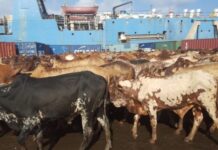The Food and Agriculture Organization (FAO) has highlighted soil pollution as a big threat to global food security and safety. According to a statement from the agency, urgent action is needed to contain the multiple soil pollution poses to global food safety and food security.
Speaking at the world soil day celebration, Deputy Director-General Maria Helena Semedo noted that thousands of chemicals commercially produced on a large scale, plastic and electronic waste, non-treated wastewater can all become a source of soil pollution. As such, they serve to pave the way for the pollutants to enter the food chain. This, in turn, causes serious consequences for the health and wellbeing of people and planet.
She further noted that approximately 33% of all soils are degraded and soils continue to deteriorate at an alarming rate. This only worsens the situation since when the soil’s buffering capacity is exceeded contaminants can enter the environment and the food chain.
Human activities have also been proven to be the main source of soil pollution. As such, Ms. Semedo called for greater political support and significantly increased investment towards healthy soils.
World Soil Day 2018
This year’s theme was “Be the solution to soil pollution.” FAO offers a number of recommendations on how to reduce the soil contamination at the state, industrial and consumer level. For instance, growing cities are producing mounds of garbage that end up in landfills and enter the soil, up to 80% of which could be recycled.
As technological progress accelerates, electronic waste is considered as a new emerging threat to soils. According to a FAO report, 50m tons of e-waste are generated every year. This thus makes it one of the world’s fastest growing pollution problems affecting our soils. As such, the organization encourages recycling of old devices as opposed to discarding them.
On the other hand, whereas agrochemicals are able to help meet the world’s growing demand for food, they have been proven to leave a legacy of soil pollution. Moreover, nearly 60% of the top agricultural soils in 11 European countries reportedly contain residues of multiple persistent pesticides.








